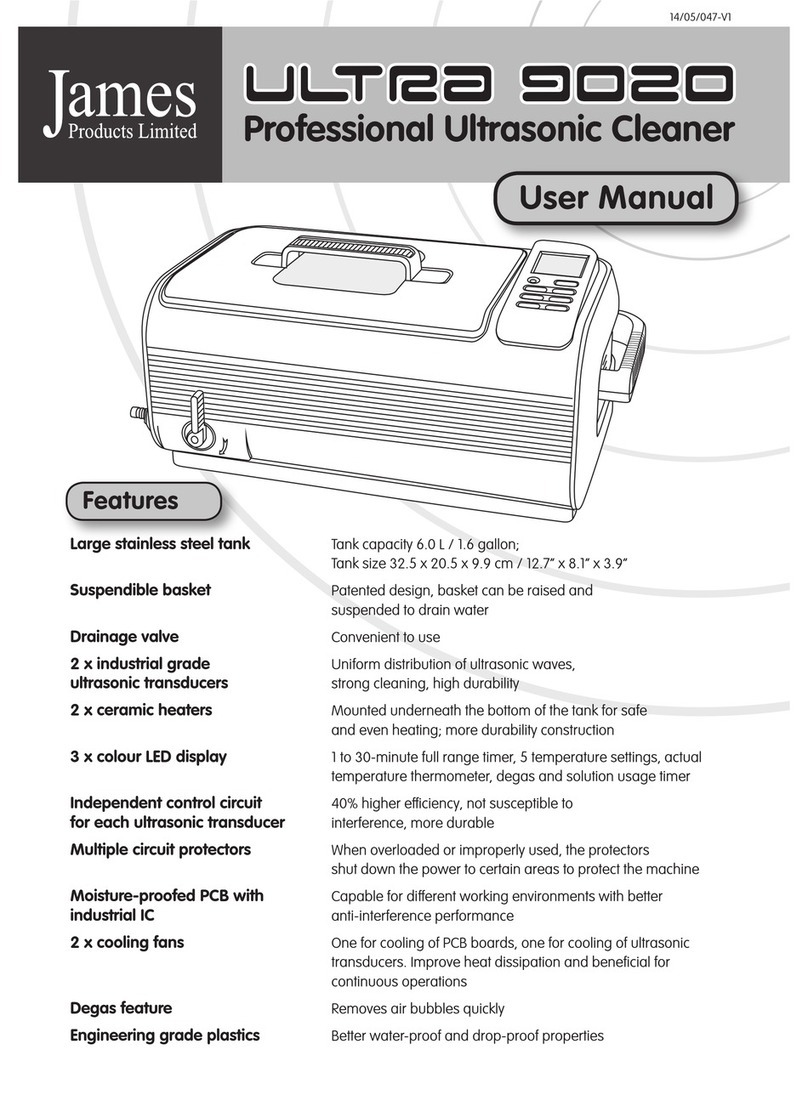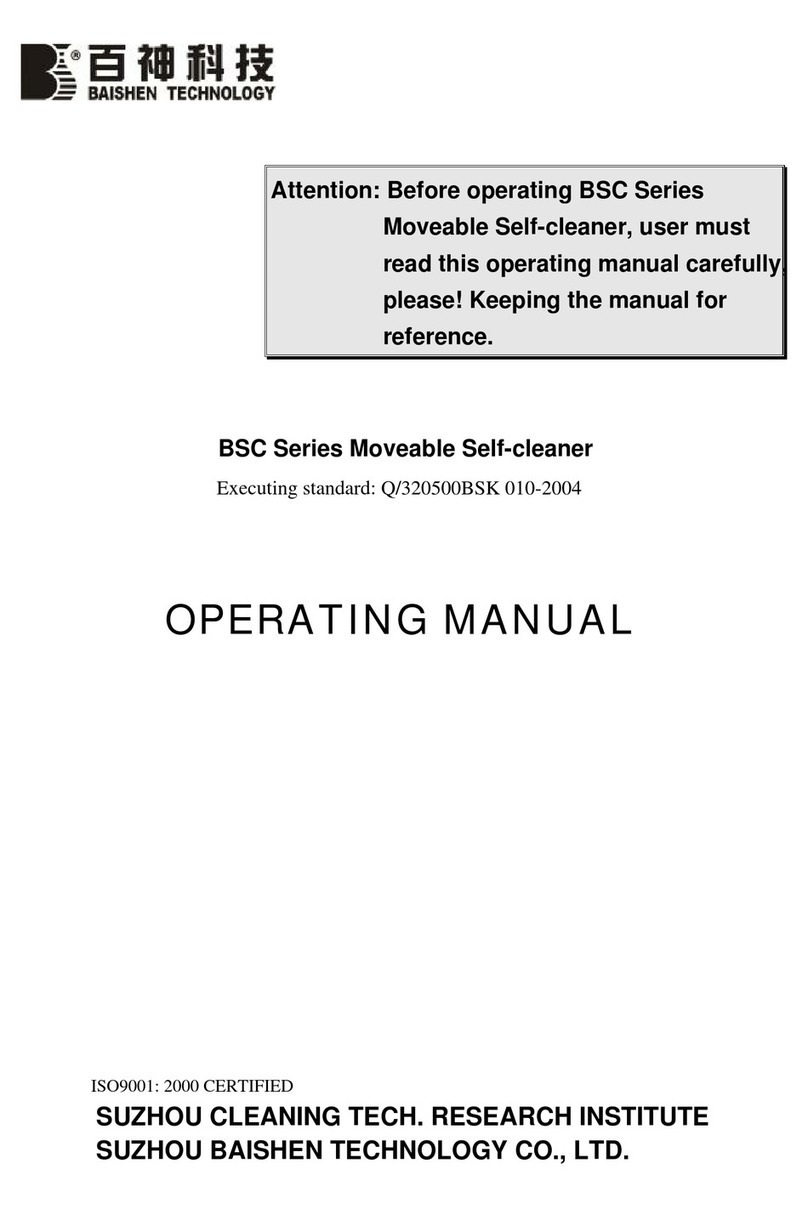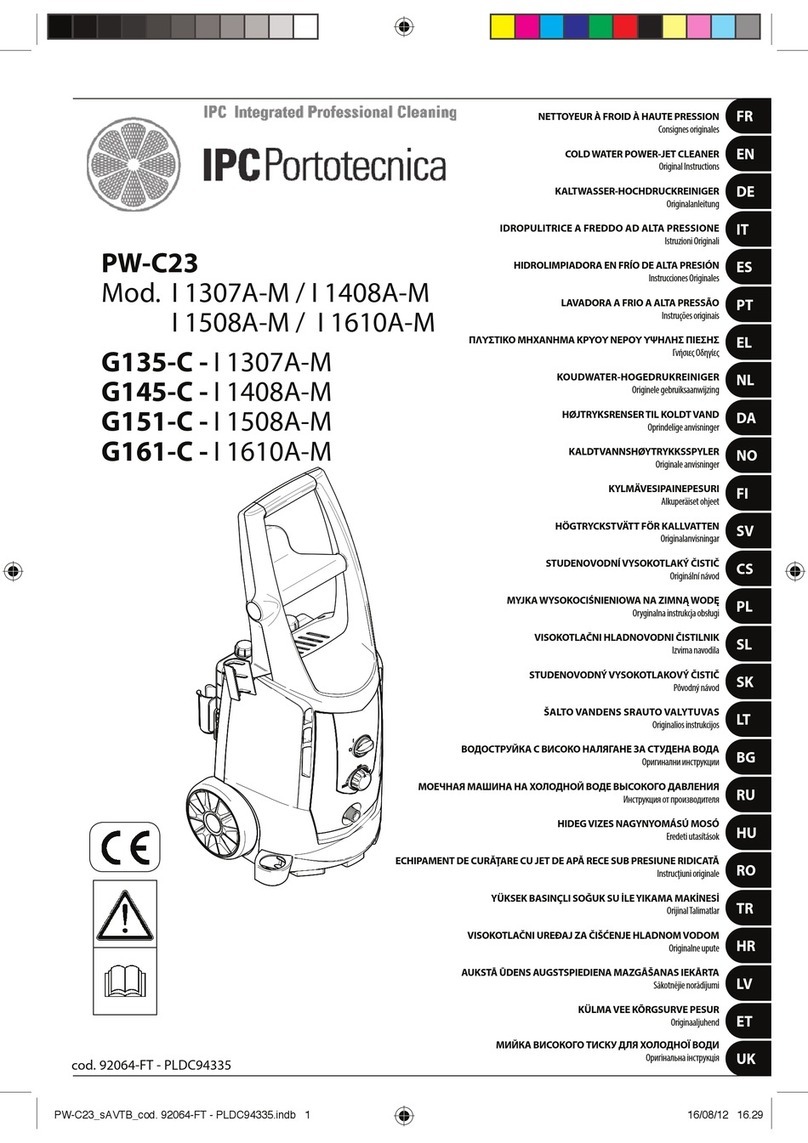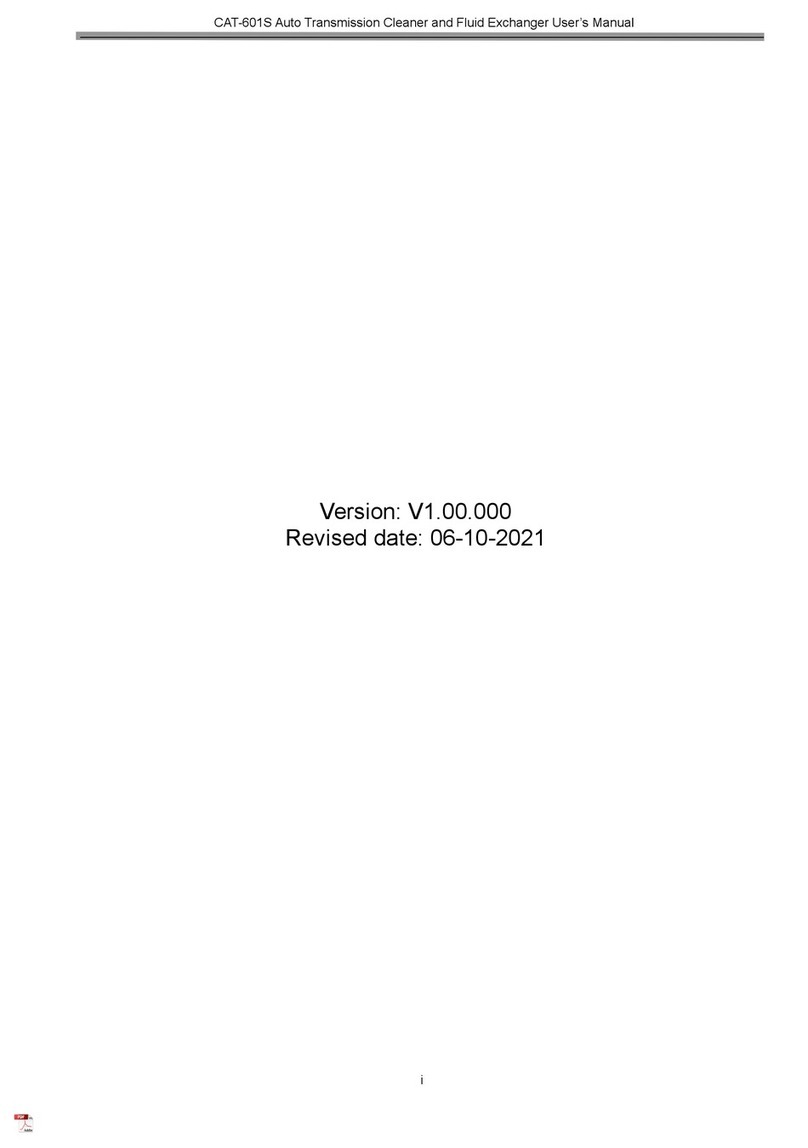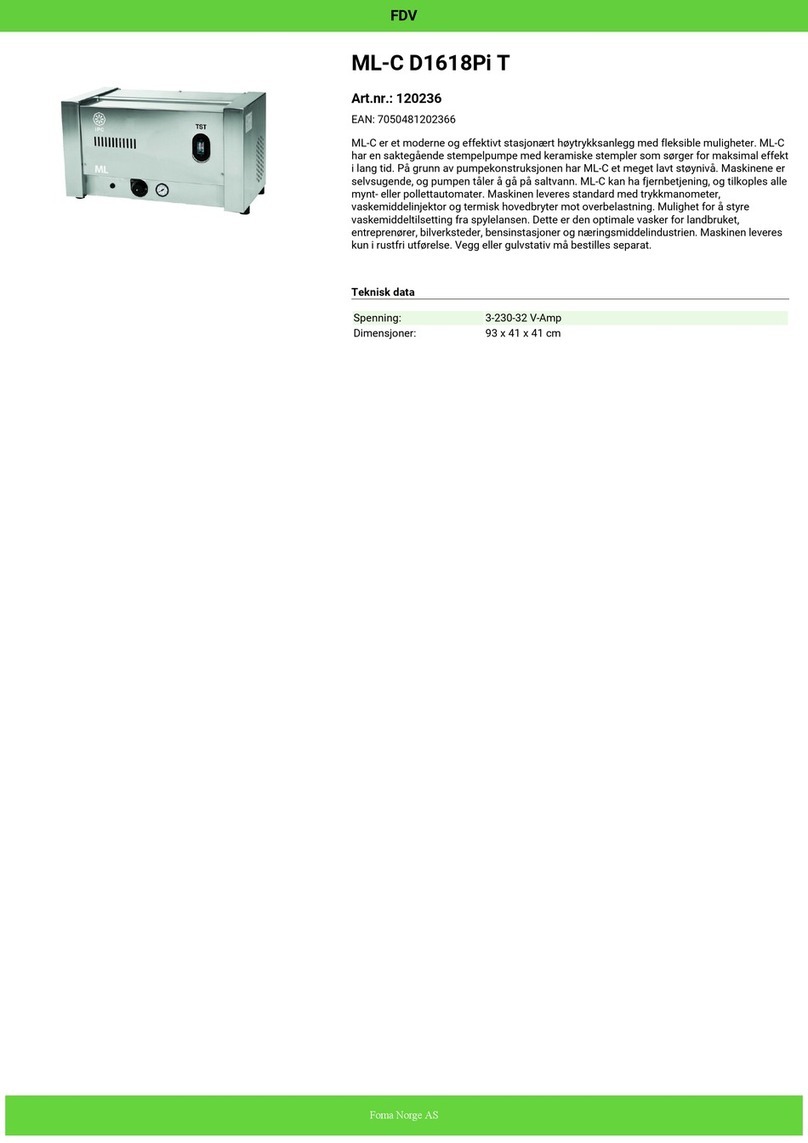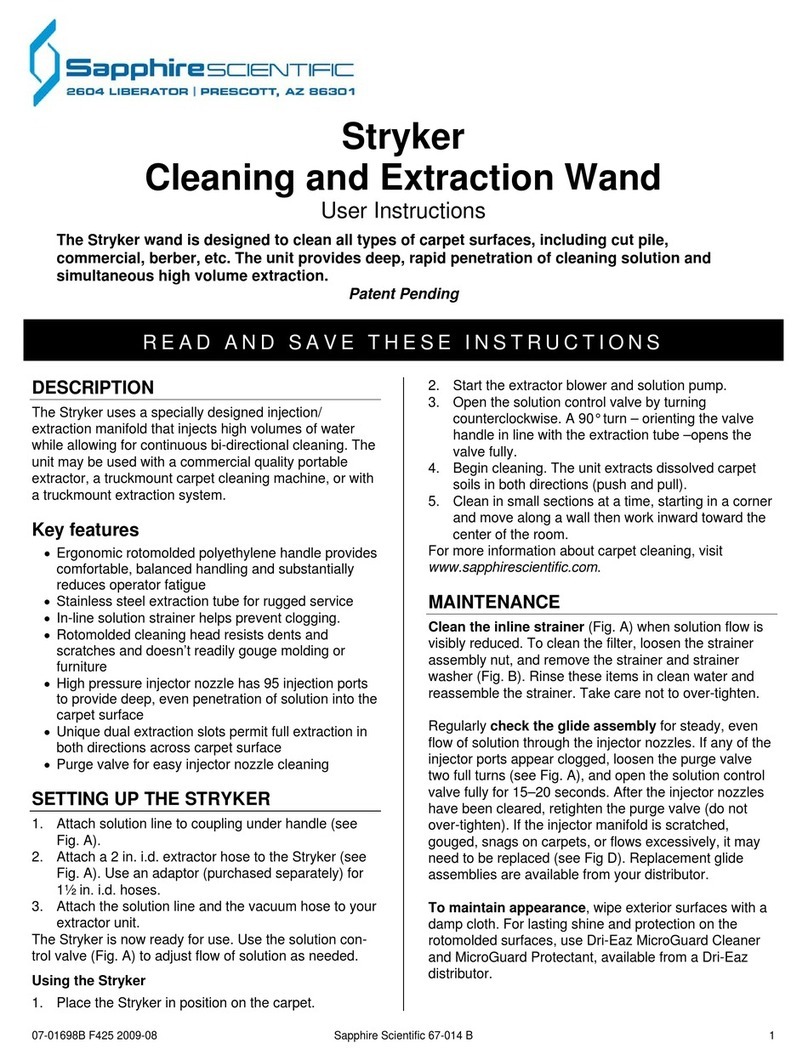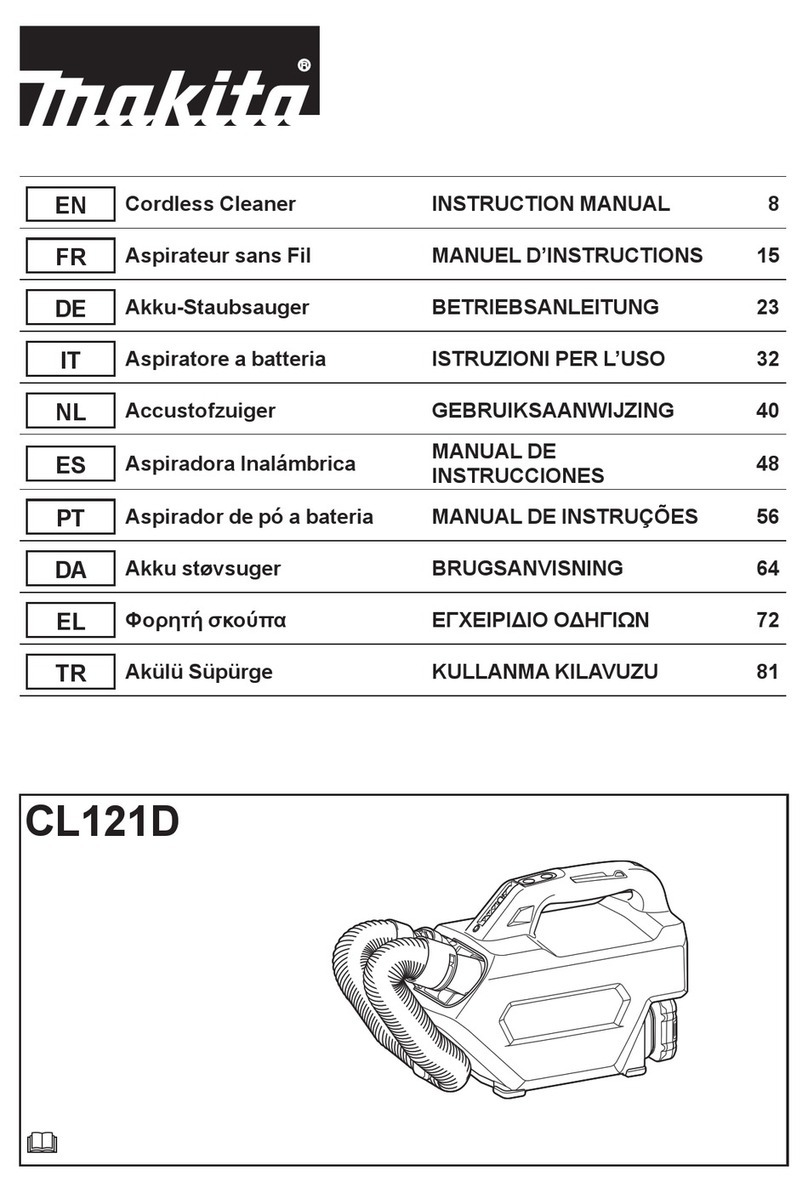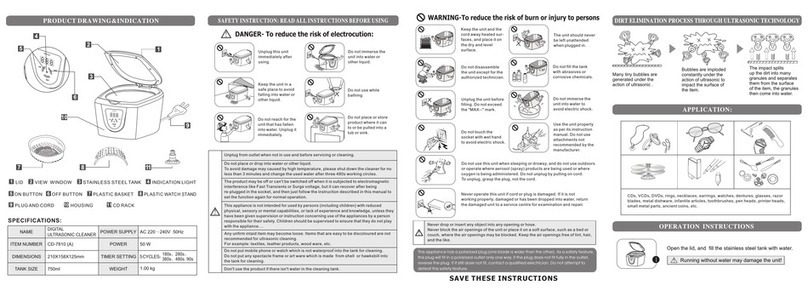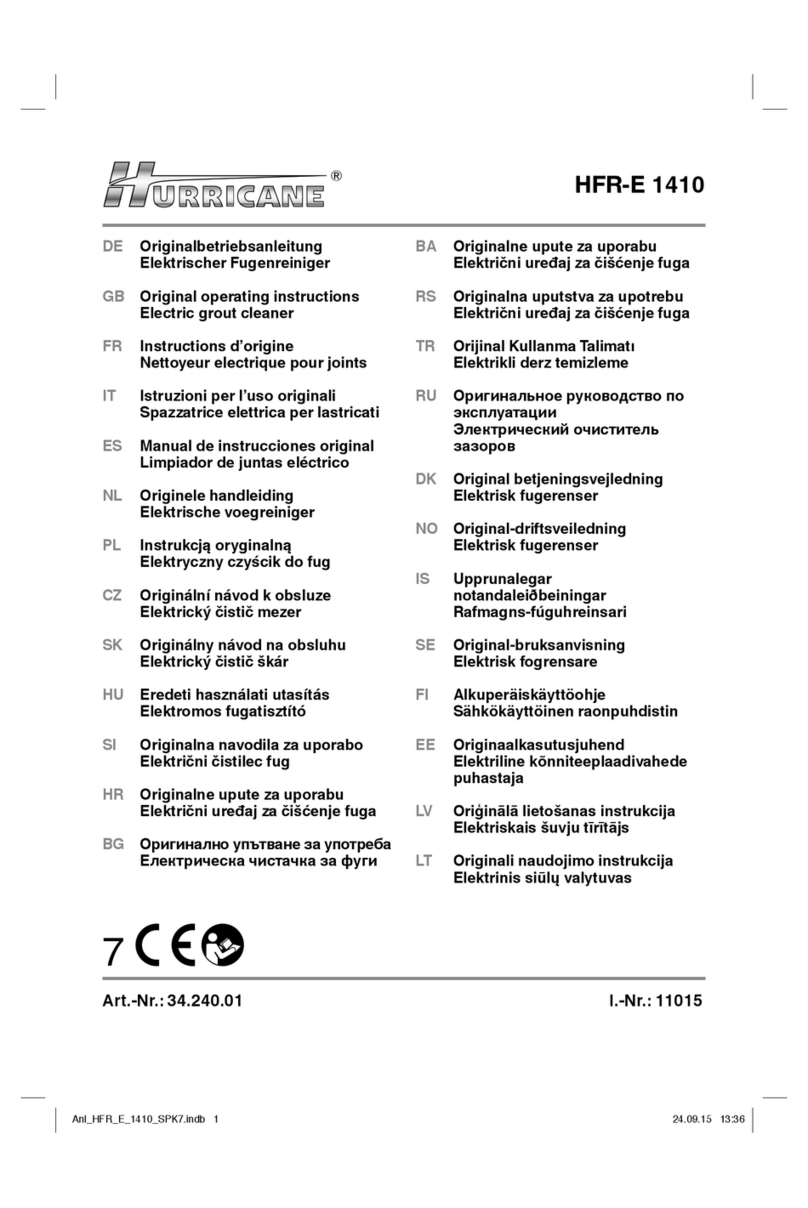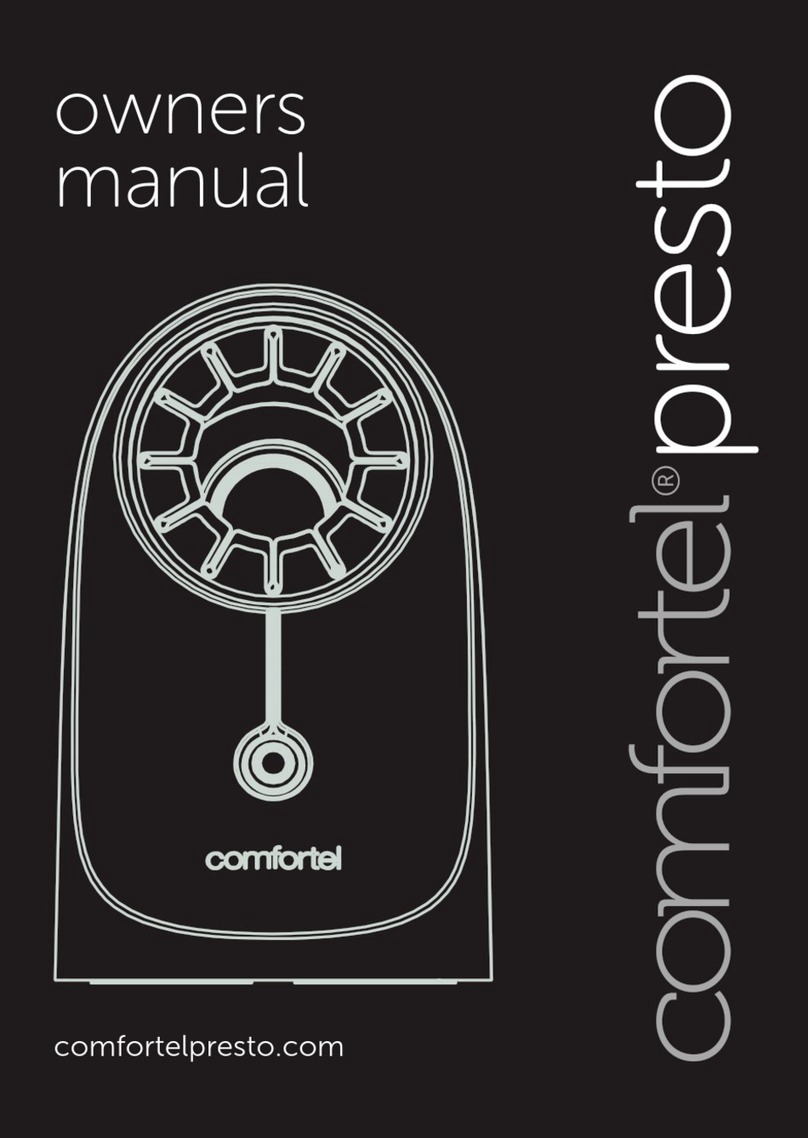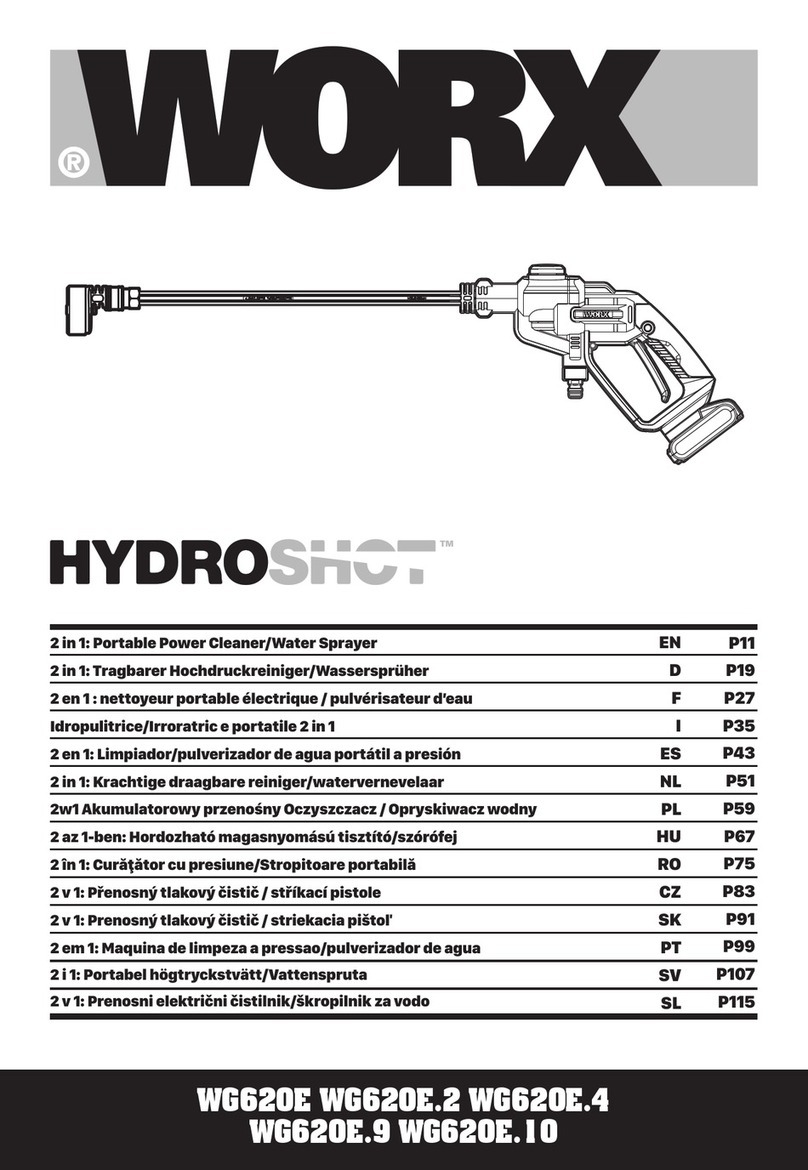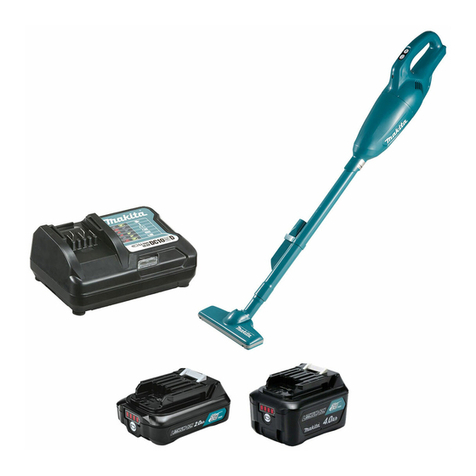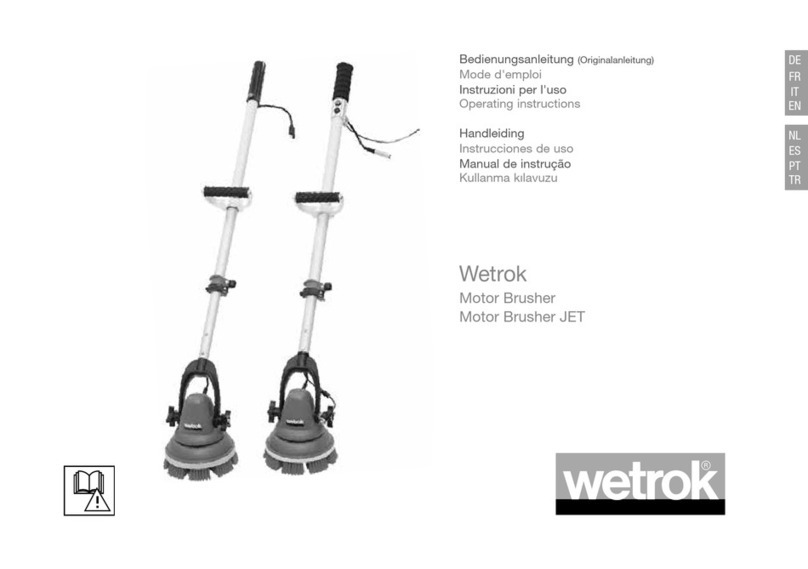Mamba AG100 User manual

Model: AG100
Drain Cleaning Machine
Operation Manual
WARNING!
Read this Operator’s Manual carefully before using
this tool. Failure to understand and follow the
contents of this manual may result in electrical
shock, fire and/or serious personal injury.

1
General Safety Information
WARNING! Read and understand all
instructions. Failure to follow all instructions
listed below may result in electric shock, fire,
and/or serious personal injury.
SAVE THESE INSTRUCTIONS!
Work Area Safety
•Keep your work area clean and well lit.
Cluttered benches and dark areas invite
accidents.
•Do not operate power tools in explosive
atmospheres, such as in the presence of
flammable liquids, gases, or dust. Tools create
sparks which may ignite the dust or fumes.
•Keep bystanders, children, and visitors away
while operating a tool. Distractions can cause
you to lose control.
Electrical Safety
•Grounded tools must be plugged into an
outlet, properly installed and grounded in
accordance with all codes and ordinances.
Never remove the grounding prong or modify
the plug in any way. Do not use any adapter
plugs. Check with a qualified electrician if you
are in doubt as to whether the outlet is
properly grounded. If the tool should
electrically malfunction or break down,
grounding provides a low resistance path to
carry electricity away from the user.
•Avoid body contact with grounded surfaces
such as pipes, radiators, ranges and
refrigerators. There is an increased risk of
electrical shock if your body is grounded.
•Do not expose electrical tools to rain or wet
conditions. Water entering a tool will increase
the risk of electrical shock.
•Do not abuse cord. Never use the cord to
carry the tools or pull the plug from an outlet.
Keep cord away from heat, oil, sharp edges or
moving parts. Replace damaged cords
immediately. Damaged cords increase the risk
of electrical shock.
•When operating a tool outside, use an
outdoor extension cord marked “W-A” or “W”.
These cords are rated for outdoor use and
reduce the risk of electrical shock.
•Use only three-wire extension cords which
have three-prong grounding plugs and
three-pole receptacles which accept the tool’s
plug. Use of other extension cords will not
ground the tool and increase the risk of
electrical shock.
•Use proper extension cords. Insufficient
conductor size will cause excessive voltage
drop, loss of power.
•Before using, test the Ground Fault Circuit
Interrupter (GFCI) provided with the power
cord to insure it is operating correctly. GFCI
reduces the risk of electrical shock.
•Extension cords are not recommended
unless they are plugged into a Ground Fault
Circuit Interrupter (GFCI) found in circuit
boxes or outlet receptacles. The GFCI on the
machine power cord will not prevent electrical
shock from the extension cords.
•Keep all electric connections dry and off the
ground. Do not touch plugs or tool with wet
hands. Reduces the risk of electrical shock.
Personal Safety
•Stay alert, watch what you are doing and
use common sense when operating a power
tool. Do not use tool while tired or under the
influence of drugs, alcohol, or medications. A
moment of inattention while operating power
tools may result in serious personal injury.
•Dress properly. Do not wear loose clothing
or jewelry. Contain long hair. Keep your hair,
clothing, and gloves away from moving parts.
Loose clothes, jewelry, or long hair can be
caught in moving parts.
•Avoid accidental starting. Be sure switch is
OFF before plugging in. Carrying tools with
your finger on the switch or plugging tools in
that have the switch ON invites accidents.
Remove adjusting keys or switches before

2
turning the tool ON. A wrench or a key that is left
attached to a rotating part of the tool may result
in personal injury.
•Do not over-reach. Keep proper footing and
balance at all times. Proper footing and balance
enables better control of the tool in unexpected
situations.
•Use safety equipment. Always wear eye
protection. Dust mask, non-skid safety shoes,
hard hat, or hearing protection must be used for
appropriate conditions.
Tool Use and Care
•Use clamp or other practical way to secure
and support the workpiece to a stable platform.
Holding the work by hand or against your body is
unstable and may lead to loss of control.
•Do not force tool. Use the correct tool for your
application. The correct tool will do the job better
and safer at the rate for which it is designed.
•Do not use tool if switch does not turn it ON or
OFF. Any tool that cannot be controlled with the
switch is dangerous and must be repaired.
•Disconnect the plug from the power source
before making any adjustments, changing
accessories, or storing the tool. Such preventive
safety measures reduce the risk of starting the
tool accidentally.
•Store idle tools out of the reach of children and
other untrained persons. Tools are dangerous in
the hands of untrained users.
•Maintain tools with care. Keep cutting tools
sharp and clean. Properly maintained tools with
sharp cutting edges are less likely to bind and
are easier to control.
•Check for misalignment or binding of moving
parts, breakage of parts, and any other condition
that may affect the tool's operation. If damaged,
have the tool serviced before using. Many
accidents are caused by poorly maintained tools.
•Use only accessories that are recommended
by the manufacturer for your model. Accessories
that may be suitable for one tool may become
hazardous when used on another tool.
•Keep handles dry and clean; free from oil and
grease. Allows for better control of the tool.
Service
•Tool service must be performed only by
qualified repair personnel. Service or
maintenance performed by unqualified repair
personnel could result in injury.
•When servicing a tool, use only identical
replacement parts. Follow instructions in the
Maintenance Section of this manual. Use of
unauthorized parts or failure to follow
maintenance instructions may create a risk of
electrical shock or injury.
Specific Safety Information
WARNING
Read this operator’s manual carefully before
using the AG100 Drain Cleaner. Failure to
understand and follow the contents of this
manual may result in electrical shock, fire
and/or serious personal injury.
Drain Cleaner Safety
• Wear leather mitt provided with machine. Never
grasp a rotating cable with a cloth or loose-fitting
cloth glove. Could become wrapped around
cable and cause serious injury.
• Do not overstress cables. Keep one hand on
the cable for control when the machine is
running. Overstressing cables because of
obstruction may cause twisting, kinking or
breaking of the cable and result in serious injury.
• Position machine within two feet of inlet. Use
Front End Guide Hose when it is difficult to
locate the machine near the access or clean out.
Greater distances can result in cable twisting or
kinking.
• Do not operate machine in (REV) reverse.
Operating machine in reverse can result in cable
damage and is used only to back tool out of an
obstruction.
• Be careful when cleaning drains where
cleaning compounds have been used. Avoid

3
direct contact with skin and eyes. Serious burns
can result from some drain cleaning compounds.
• Do not operate machine if operator or machine
is standing in water. Will increase the risk of
electrical shock.
• Wear safety glasses and rubber soled, non-slip
shoes. Use of this safety equipment may prevent
serious injury.
• Only use the AG100 to clean drain lines up to
6″ in diameter. Follow instructions on the use of
the machine. Other uses or modifying the drain
cleaner for other applications may increase the
risk of injury.
Description, Specifications and
Standard Equipment
Description
The AG100 Drain Cleaning Machine will clean
drain lines from 11/4" to 4" (30 to 100mm) in
diameter and 82 feet (25m) in length depending
on size of the cable. Cor - rosion-resistant cable
drum holds 82 feet (25m) of 3/8" (10mm)
diameter cable. Cable spins at 170 RPM. The
AG100 is not designed to remove root blockages.
The drum is belt-driven by a 1/3 HP electric
motor that has a grounded electrical system. An
integral Ground Fault Circuit Interrupter (GFCI)
is built into the line cord. A FOR /OFF/ - REV (or
1/OFF/2) switch controls drum and cable rotation
and a pneumatic foot switch provides ON/OFF
control of the motor.
protect other cables.
The “Solid-Core” Integral Wound cable is
durable and kink-resistant. The cable has a
quick change coupling system for connecting or
disconnecting tools. The optional AUTOFEED
cable feed allows the cable to be advanced or
retrieved at a rate of 12.8-13.8 feet per minute
(3.9-4.2 m/minute).
Specifications
Line Capacity..... 11/4" –3" (30mm –75mm)
Line with 3/8" (10mm) Cable
3" –4" (75mm –100mm)
Drum Capacity ...100' (30,5m) of 3/8" (10mm)
Diameter Cable
Motor Type..........Induction
120V~ Motor ......1/3 HP, 5A, 60Hz
220-240V~Motor.............230W, 2.5 A, 50 Hz
No Load Speed (no)
120V~.................170 RPM
220-240V~ .........140 RPM
Control ...............Rocker Type
FOR/OFF/REV switch and
pneumatic foot switch.
Figure 1
Machine Inspection
To prevent serious injury, inspect your Drain
Cleaning Machine. The following inspection
procedures should be performed before each use.
1. Make sure the Drain Cleaning Machine is
unplugged and the directional switch is set
to the OFF position.(Figure 1)
Left: to reverse
Middle: to stop

4
Right: to forward
Figure 2
2. Inspect the power cord and plug for damage.
If the plug has been modified, is missing the
grounding prong or if the cord is damaged,
do not use the Drain Cleaning Machine until
the cord has been replaced.
3. Inspect the Drain Cleaning Machine for any
broken, missing, misaligned or binding parts
as well as any other conditions which may
affect the safe and normal operation of the
machine. If any of these conditions are
present, do not use the Drain Cleaning
Machine until any problem has been
repaired.
4. Lubricate the Drain Cleaning Machine, if
necessary, according to the Maintenance
Instructions.
5. Use tools and accessories that are designed
for your drain cleaner and meet the needs of
your application.
The correct tools and accessories allow you
to do the job successfully and safely.
Accessories suitable for use with other
equipment may be hazardous when used
with this drain cleaner.
6. Clean any oil, grease or dirt from all
equipment handles and controls. This
reduces the risk of injury due to a tool or
control slipping from your grip.
7. Inspect the cutting edges of your tools. If
necessary, have them sharpened or
replaced prior to using the Drain Cleaning
Machine. Dull or damaged cutting tools can
lead to binding and cable breakage.
8. Inspect cables and couplings for wear and
damage. Cables should be replaced when
they become severely worn or corroded. A
worn cable can be identified when the
outside coils become flat. Worn or damaged
cables can break causing serious injury.
Machine Set-Up
WARNING
Do not place machine in water. Water entering
the motor can result in electrical shock.
To prevent serious injury, proper set-up of the
machine and work area is required. The
following procedures should be followed to
set-up the machine:
Plug the Drain Cleaning Machine into the
electrical outlet, making sure to position the
power cord along the clear path selected earlier.
If the power cord does not reach the outlet, use
an extension cord in good condition.
Installing Wheels
1. Install retaining clip into groove on one end of
axle.
2. Slide one wheel onto axle with the boss away
from the clip. (See Figure 3.)
3. Fully insert axle through hole in bracket.
4. Slide second wheel onto axle, boss first.
5. Install retaining clip into groove.
Figure 3 –Assembling Wheel
Warning
To avoid electric shock and electrical fires, never
use an extension cord that is damaged or does
not meet the following requirements:
If the wire thickness is too small, the cord may

5
overheat, melting the cord’s insulation or
causing nearby objects to ignite. To reduce risk
of electrical shock, keep all electrical
connections dry and off the ground. Do not touch
plug with wet hands.
1. Inspect the drain cleaning gloves (See
Figure 4). Make sure they are in good
condition with no holes, tears or loose
sections that could be caught in the rotating
cable. It is important not to wear improper or
damaged gloves. The gloves protect your
hands from the rotating cable.
Figure 4 –HONGLI Drain Cleaning Gloves
2. Make sure that the drain cleaning machine is
unplugged and inspect the power cord,
Ground Fault Circuit Interrupter (GFCI) and
plug for damage. If the plug has been
modified, is missing the grounding prong or
if the cord is damaged, to avoid electrical
shock, do not use the machine until the cord
has been replaced by a qualified repair
person.
3. Clean the drain cleaner, including handles
and controls. This aids inspection and helps
prevent the machine or control from slipping
from your grip. Clean and maintain the
machine per the maintenance instructions.
4. Inspect the drain cleaning machine for the
following items:
•Proper assembly and completeness.
•Any broken, worn, missing, misaligned or
binding parts. Rotate the drum and make
sure that it turns freely.
•Make sure the foot switch is attached to the
drain cleaning machine. Do not operate the
machine without the foot switch.
•Check the belt guard to insure that it is
securely fastened to the drain cleaner.
Do not operate without guard in place.
Operating Instructions
Always wear eye protection to protect your eyes
against dirt and other foreign objects.
Wear HONGLI drain cleaning gloves Never
grasp the rotating cable with anything else,
including a glove or a rag. They can become
wrapped around the cable, causing hand
injuries.
Always use appropriate personal protective
equipment while handling and using drain
cleaning equipment. Drains may contain
chemicals, bacteria and other substances that
may be toxic, infectious, cause burns or other
issues.
Do not allow the cutter to stop turning while the
machine is running. This can overstress the
cable and may cause twisting, kinking or
breaking of the cable. Twisting, kinking or
breaking cable may cause striking or crushing
injuries.
Position machine within two feet (0.6m) of the
drain inlet or properly support exposed cable
when the distance exceeds two feet. Greater
distances can cause control problems leading to
twisting, kinking or breaking of the cable. Twist
-ing, kinking or breaking cable may cause
striking or crushing injuries.
Follow operating instructions to reduce the risk
of injury from twisted or broken cables, cable
ends whipping around, machine tipping,
chemical burns, in factions and other causes.
1. Make sure that the machine and work area
is properly set up and the work area is free
of bystanders and other distractions.
2. Pull cable out of drum and feed into drain.
Push cable as far into drain as it will go. At

6
least one foot (.3 m) of cable must be in
drain so that the end of the cable will not
come out of the drain and whip around when
the machine is started.
Directly route the cable from the outlet of the
machine to the drain opening, minimizing
exposed cable and changes in direction. Do
not tightly bend the cable –this can increase
the risk of twisting or breaking.
3. Assume a proper operating position.
•Be sure you can control the ON/OFF action
of the foot switch and can quickly release the
foot switch if needed. Do not step on foot
switch yet.
•Be sure that you have good balance, do not
have to over reach, and cannot fall on the
foot switch, drain cleaning machine, the
drain or other hazards.
•You must be able to place at least one hand
on the cable at all times to control and
support the cable.
•You must be able to reach the FOR/ - OFF/
REV switch.
This operating position will help to maintain
control of the cable and machine.
(See Figure 6.)
Figure 6 –In Operating Position, Manually
Feeding Cable
4. Move the FOR/OFF/REV switch to the
FOR (FORWARD) position. Do not de -
press the foot switch yet. FOR/ OFF -
/REV refers to the drum/cable rotation
and not to the direction of cable movement.
Do not rotate the cable in reverse
except as specifically described in these
instructions. Running the drain cleaner in
REV (REVERSE) can damage the cable.
AUTOFEED Cable Feed Operation
1. Confirm that at least one foot (0.3m) of cable
is in the drain.
2. Grasp near the center of the exposed length
of cable with a gloved hand. Gloved hand
must be on the cable to control and support
the cable. Improper cable support can allow
the cable to kink or twist and can damage
the cable or injure the operator. Make sure
that the cable outlet of the drain cleaner is
within 2' (0.6m) of the drain opening. Place
the other hand on the cable feed handle.
Handle should be in neutral (Vertical)
position(see Figure 7).
Figure 7
3. Depress the foot switch to start the machine.
The person controlling the cable must also
control the foot switch. Do not operate the

7
drain cleaner with one person controlling the
cable and another person controlling the foot
switch. This can lead to twisting, kinking and
breaking of the cable.
4. With the cable rotating in the FOR
(FORWARD) direction, move the
AUTOFEED
control handle to the ADVANCE position
until it engages and advances the cable.
ADVANCE (or RETRIEVE) can be almost
90°from the NEUTRAL position (Figure8).
The rotating cable will work into the drain as
you control the cable with your gloved hand.
Do not allow the cable to build up outside the
drain, bow or curve. This can allow the cable
to twist, kink or break.
Figure 8
Maintenance Instructions
WARNING
Make sure machine is unplugged from power
source before performing maintenance or
making any adjustment.
Lubrication
Lubricate machine with grease at grease fitting
(located on jaw housing) once a week if used
every day; once a month if used less. Place a
drop of oil on each of the bearing points, thrust
bearing, clutch jaws, etc., at least once a year.
Cables
Cables should be thoroughly flushed with water
to prevent damaging effects of sediment and
drain cleaning compounds.
Periodically lubricate cables and couplings.
When not in use, store cables indoors to prevent
deterioration by the elements.
Cables should be replaced when they become
severely corroded or worn. A worn cable can be
identified when outside of coils become flat.
Machine Storage
Motor-driven equipment must be kept indoors or
well covered in rainy weather. Store the machine
in a locked area that is out of reach of children
and people unfamiliar with drain cleaners. This
machine can cause serious injury in the hands of
untrained users.
If machine has been exposed to freezing
weather, unit must be run for ten (10) to twenty
(20) minutes without load to warm up. Failing to
do this will result in frozen bearings. If machine is
exposed to weather for a period of time,
moisture will form across motor windings
causing motor to burn out.
